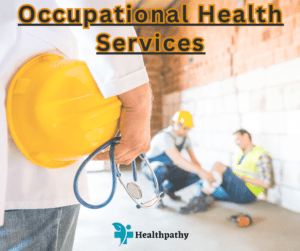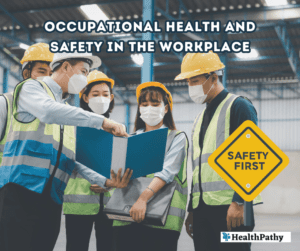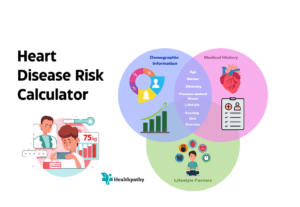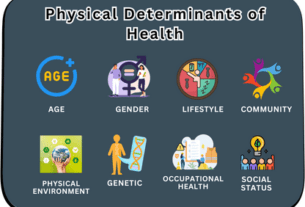Occupational Health and Safety degree requirements

In the ever-evolving landscape of modern industries, the well-being of employees takes center stage. Occupational Health and Safety (OHS) professionals play a critical role in this narrative by ensuring workplace safety and fostering a culture of well-being. Pursuing an Occupational Health and Safety degree not only equips individuals with the knowledge to identify and mitigate risks but also empowers them to create environments where people thrive. This article provides a comprehensive exploration of the degree requirements, core concepts, and the array of career opportunities that await OHS graduates.
Core Concepts in Occupational Health and Safety
The core concepts of an Occupational Health and Safety degree provide students with a robust understanding of the intricacies of workplace safety and well-being.
Fundamentals of Occupational Safety
Courses in this domain dive deep into hazard identification, risk assessment, and incident analysis. Students learn how to identify potential risks, evaluate their impact on employee safety, and develop strategies to prevent accidents. Comprehending safety regulations and standards ensures that graduates are well-equipped to navigate the complex web of workplace safety compliance.
Occupational Health Principles
Understanding the principles of occupational health is crucial for safeguarding the physical and mental well-being of workers. Topics like workplace ergonomics and human factors offer insights into optimizing workspaces to prevent injuries and enhance productivity. Courses in occupational toxicology and exposure assessment equip students with the ability to identify and mitigate chemical and biological hazards that may impact employees’ health. Additionally, workplace health promotion techniques empower graduates to foster a culture of wellness and preventive care within organizations.
Degree Requirements for Occupational Health and Safety
General Education Requirements
A well-rounded education is essential for OHS professionals. Mathematics and statistics courses provide students with the quantitative skills necessary for risk assessment and data analysis. Proficiency in English and communication is crucial for effective collaboration and the dissemination of safety protocols. Social sciences and humanities courses help contextualize safety within broader societal frameworks, enhancing graduates’ ability to address safety concerns with a holistic perspective.
Core Courses
The cornerstone of an Occupational Health and Safety degree lies in core courses that delve into the heart of workplace safety:
Introduction to Occupational Health and Safety: Students gain a foundational understanding of the field’s history, key principles, and the role of OHS professionals.
Industrial Hygiene and Chemical Safety: This course addresses chemical exposure risks, ventilation systems, and personal protective equipment.
Safety Engineering and Risk Management: Students learn how to design safety systems and analyze risks, making them capable of preventing potential hazards.
Occupational Health Regulations and Compliance: Understanding legal frameworks and compliance requirements ensures that graduates can navigate regulatory complexities.
Workplace Ergonomics and Human Factors: This course explores the design of workspaces and tasks to optimize human performance and minimize injury risks.
Occupational Health and Safety Management Systems: Students learn how to develop, implement, and manage comprehensive safety programs within organizations.
Incident Investigation and Emergency Response: Equipping graduates with the skills to analyze accidents and manage emergencies effectively.
Safety Training and Education Techniques: This course hones graduates’ ability to educate employees about safety practices and protocols.
Specialized Elective Courses
Tailoring the degree to specific interests and career paths is facilitated by a range of specialized electives:
Construction Safety: Focuses on the unique safety challenges posed by construction sites, including heavy machinery operation, scaffolding, and fall protection.
Healthcare Facility Safety: Addresses safety concerns in healthcare settings, such as infection control, patient handling, and hazardous material management.
Environmental Health and Safety: Explores the intersection of workplace safety and environmental impact, emphasizing sustainable practices.
Occupational Health Psychology: Provides insights into human behavior about safety, helping graduates understand and address psychological factors affecting workplace safety.
Ergonomics in Design: Examines how design principles influence workplace safety and employee well-being, contributing to the creation of ergonomically optimized environments.
Internship/Practicum:
Applying theoretical knowledge to real-world scenarios is a critical aspect of an OHS degree. Internships and practicums provide students with hands-on experience, enabling them to:
- Observe safety practices in action.
- Collaborate with industry professionals.
- Develop problem-solving skills in a real work environment.
- Apply classroom learning to practical situations.
- Network with potential future employers.
- Advanced Studies and Research
Advanced Safety Management
Building on the foundational courses, advanced studies focus on developing a comprehensive understanding of safety management:
Safety Culture Development: Exploring strategies to cultivate a culture of safety within organizations.
Safety Performance Metrics: Learning how to measure and evaluate the effectiveness of safety programs and protocols.
Legal Aspects of Occupational Safety: Understanding the legal implications and ramifications of workplace safety issues.
Occupational Health and Safety Research Methods
Equipping students with research skills is vital for contributing to the field’s advancement:
Quantitative and Qualitative Research Techniques: Gaining proficiency in various research methodologies to investigate safety-related issues.
Data Collection and Analysis: Learning how to gather and interpret data to inform safety decisions.
Case Studies and Literature Review: Analyzing real-world cases and existing research to inform safety practices.
Capstone Project
The capstone project marks the culmination of an Occupational Health and Safety degree, allowing students to showcase their mastery of the subject. Through an in-depth research project, students:
- Investigate complex safety challenges.
- Apply research skills to practical scenarios.
- Analyze and interpret data.
- Present findings and recommendations to peers and faculty.
- Professional Certifications and Licensure
Professional certifications and licensure add substantial value to an OHS graduate’s profile:
Certified Safety Professional (CSP): A widely recognized certification that demonstrates expertise in safety management and comprehensive knowledge of safety regulations and practices.
Certified Industrial Hygienist (CIH): Focuses on industrial hygiene, emphasizing chemical and biological hazards in the workplace.
Continuing Education and Professional Development: Staying up-to-date with evolving safety standards and industry trends through ongoing education and training.
Career Opportunities for Occupational Health and Safety Graduates
With a solid foundation in place, OHS graduates are well-equipped for a range of rewarding careers:
Occupational Health and Safety Specialist: These professionals assess workplaces for potential hazards, develop safety protocols, and ensure compliance with safety regulations.
Safety Engineer: Safety engineers combine engineering principles with OHS knowledge to design and implement systems that protect workers and property from harm.
Industrial Hygienist: Specialists in identifying and mitigating workplace health hazards, industrial hygienists assess factors like chemical exposure, noise, and ventilation to safeguard workers’ health.
Environmental Health and Safety Manager: These managers oversee safety protocols and environmental impact within organizations, aligning business goals with health and safety imperatives.
Risk Management Consultant: Assessing risks and developing strategies to minimize them, risk management consultants help organizations create safe and secure operational frameworks.
Compliance Officer: Ensuring adherence to regulatory requirements, compliance officers help organizations avoid legal issues by implementing safety and health standards.
Health and Safety Trainer: Trainers educate employees about safety practices, fostering a culture of awareness and prevention within the workforce.
Summary:
The journey toward an Occupational Health and Safety degree is a comprehensive and enriching one. By mastering core concepts, fulfilling degree requirements, and engaging in advanced studies, individuals position themselves as stewards of workplace well-being. Armed with specialized knowledge and practical skills, Occupational Health and Safety graduates are not only equipped to ensure the safety of workplaces but also to advocate for a culture of health and well-being. As these professionals embrace continuing education and professional certifications, they stand at the forefront of creating environments where employees thrive, elevating organizations and society as a whole.
Related Articles:



Follow us:





